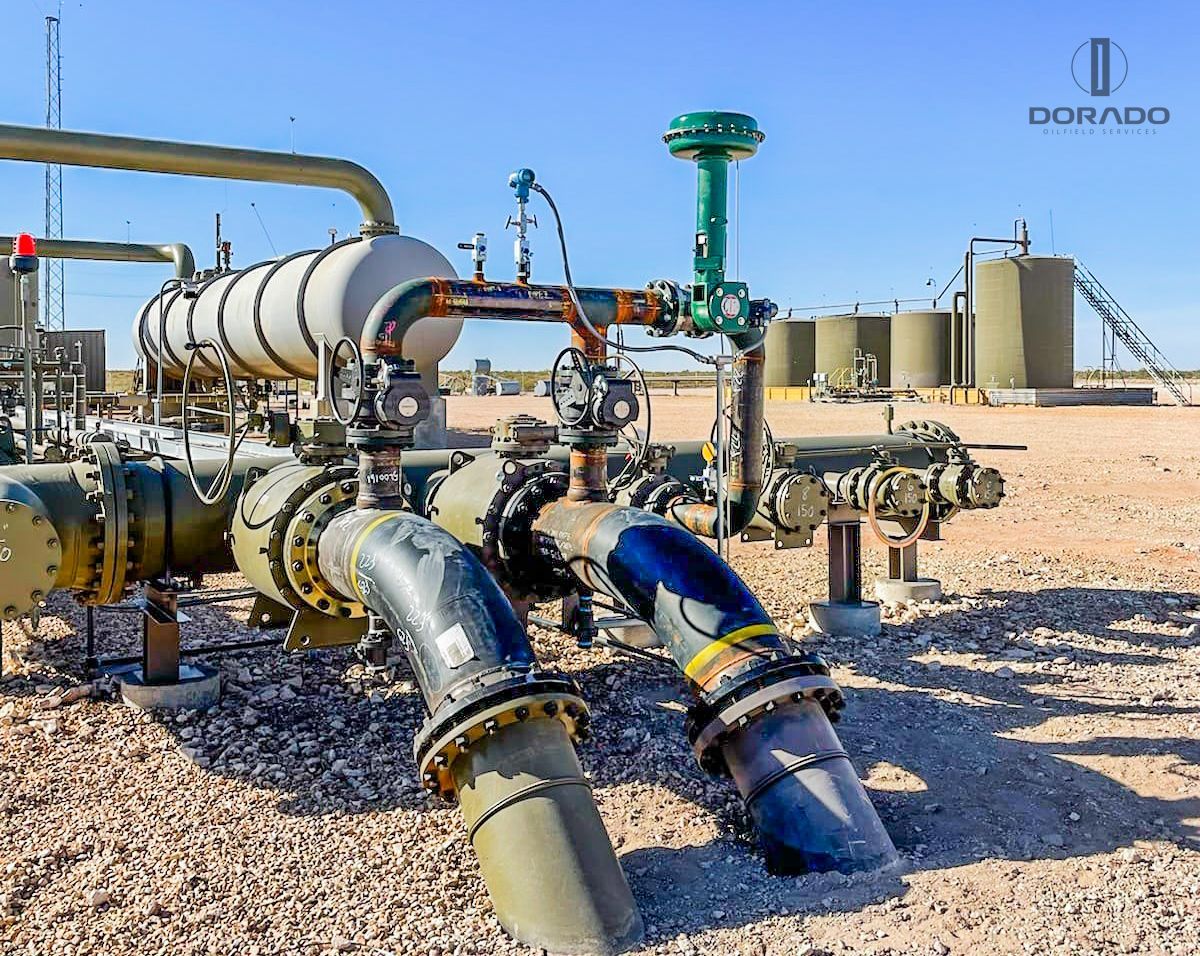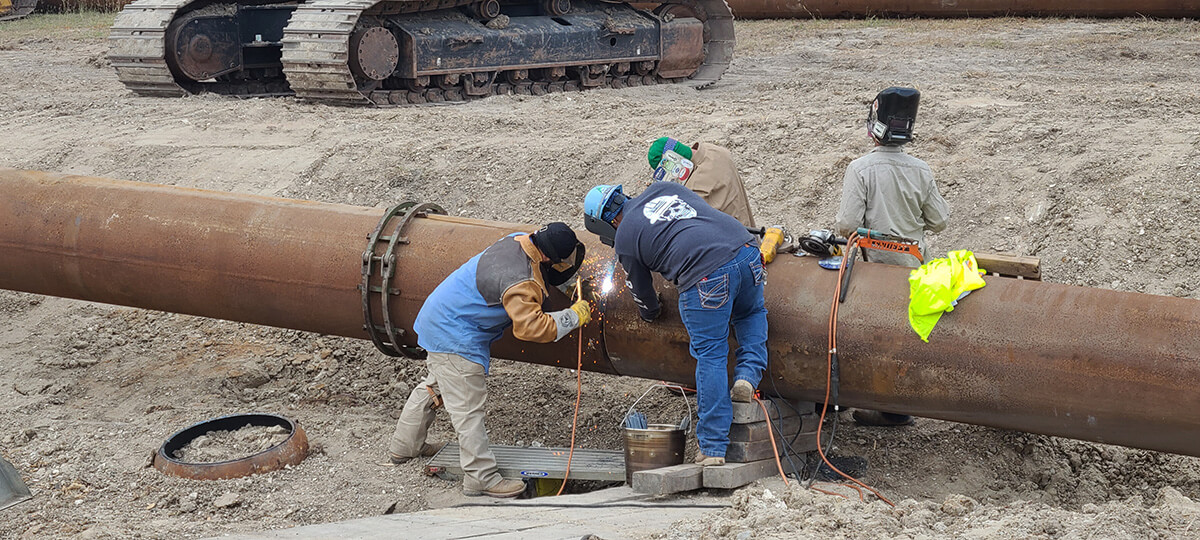Hidden Costs to Watch Out for in Pipeline Construction Services Contracts
Wiki Article
Discovering the most up to date Innovations in Pipeline Construction Providers for Modern Projects
The Pipeline Construction market is undergoing significant changes. Developments such as wise products and robotics are reshaping conventional methods. These developments promise to improve performance and security. Additionally, AI technologies are boosting task management capacities. As these components assemble, they question about their long-lasting effect on sustainability and cost. Comprehending these innovations is crucial for stakeholders looking to browse this advancing landscape. What ramifications do they hold for future projects?The Surge of Smart Products in Pipeline Construction
As the demand for much more sustainable and effective Pipeline systems boosts, the combination of wise materials has become a transformative remedy in Pipeline Construction. These advanced materials possess one-of-a-kind buildings that enhance the efficiency and durability of pipes. As an example, self-healing polymers can automatically fix small leaks, substantially lowering maintenance prices and downtime. In addition, materials embedded with sensing units can keep an eye on architectural stability and ecological conditions, allowing for real-time data collection and analysis.Clever materials are corrosion-resistant and usually light-weight, which not just simplifies installment however additionally expands the lifespan of the systems. Their versatility makes it possible for pipes to withstand severe environmental problems, advertising safety and reliability. As sectors progressively prioritize sustainability, the usage of environmentally friendly clever products contributes to reduced ecological impact. On the whole, the rise of clever materials notes a notable shift in Pipeline Construction, paving the means for ingenious remedies to fulfill modern framework requirements.
Innovations in Robotics for Installation and Maintenance
The combination of smart products in Pipeline Construction is matched by advancements in robotics, which are transforming installment and maintenance procedures. Robot modern technologies, such as automated welding systems and drones, enhance efficiency and accuracy, minimizing human error and decreasing safety dangers. These robotics can operate in challenging atmospheres, making certain that installations are carried out in remote or harmful areas without placing employees at threat.Robotic examination devices equipped with sophisticated sensors provide real-time information on Pipeline stability, enabling for proactive maintenance. They can identify leaks or structural weak points, allowing prompt treatments that expand the life-span of Pipeline systems. The usage of robotics not just accelerates the Construction timeline yet also optimizes source allowance, resulting in set you back savings. As these modern technologies proceed to advance, they are readied to play an essential duty fit the future of Pipeline Construction, making certain dependability and sustainability in framework advancement.
AI-Driven Task Monitoring Equipment Transforming Process
AI-driven job administration devices are improving workflows in Pipeline Construction by improving decision-making processes via enhanced access to real-time data analytics. These devices make it possible for teams to respond quickly to job advancements, therefore enhancing effectiveness. Streamlined interaction channels foster collaboration among stakeholders, better maximizing project results.Enhanced Decision-Making Processes

Real-Time Information Analytics
Using real-time information analytics, contemporary job management tools change operations in Pipeline Construction. These innovative tools leverage expert system to give instantaneous understandings into job efficiency, source allotment, and prospective dangers. By continuously checking crucial efficiency indicators, groups can quickly adjust to altering problems, optimizing labor and materials usage. The integration of real-time data permits even more informed decision-making, reducing hold-ups and decreasing expenses. In enhancement, anticipating analytics can determine fads and projection obstacles before they escalate, improving general task effectiveness. Consequently, Pipeline Construction firms that adopt these AI-driven tools can boost job timelines and outcomes, ensuring they remain affordable in a significantly complex sector landscape. This advancement notes a considerable shift toward data-centric monitoring practices.Streamlined Interaction Channels
Efficient interaction is vital in Pipeline Construction, where numerous stakeholders must team up flawlessly to ensure task success. The introduction of AI-driven project monitoring devices has actually revolutionized communication networks within the market. These tools assist in real-time details sharing, enabling teams to gain access to updates, share documents, and track progress successfully. By automating regular tasks and providing a central system for interaction, these developments remove misconceptions and minimize hold-ups. Enhanced exposure into job timelines and source allowance cultivates liability among staff member. Furthermore, AI analytics can identify prospective communication voids, guaranteeing aggressive analytical. Inevitably, streamlined communication channels not just boost process however likewise boost general task performance, enabling Pipeline Construction companies to meet contemporary demands efficiently.Enhanced Security Methods With Innovation Integration
The integration of modern technology in Pipeline Construction has actually visit site led to boosted safety and security protocols. Real-time monitoring systems, wearable safety devices, and automated danger analyses are now crucial parts in reducing hazards on work sites. These innovations not only enhance worker safety and security however likewise simplify compliance with sector regulations.Real-Time Monitoring Systems
Just how can real-time monitoring systems change Pipeline Construction safety protocols? By integrating sophisticated modern technology, these systems offer continuous monitoring of Construction tasks, making sure instant discovery of prospective risks. Sensors and electronic cameras can keep track of ecological problems, equipment performance, and workforce movements, delivering critical information in actual time. This proactive method enables project managers to identify risks before they escalate, considerably enhancing safety and security measures on-site. Furthermore, real-time tracking promotes conformity with governing requirements, making sure that security standards are fulfilled regularly. The ability to examine information instantaneously supports enlightened decision-making, making it possible for timely interventions. As a result, Pipeline Construction tasks can run a lot more efficiently while securing the well-being of workers and minimizing accidents, therefore reinventing the market's safety and security landscape.Wearable Safety Gadgets
Often, wearable safety gadgets are being integrated into Pipeline Construction to enhance security procedures. These cutting-edge devices, including clever headgears, vests, and wristbands, are made to check employee health and wellness and environmental problems in real-time. Geared up with sensors, these tools can spot risks such as toxic gas direct exposure, too much warm, or high sound levels, providing prompt notifies to managers and workers. Additionally, wearable innovation frequently includes GPS monitoring functions, enabling efficient area surveillance of employees on-site. This capability not just aids in quick feedback during emergencies yet also boosts general project administration. By focusing on worker security via technology assimilation, Pipeline Construction firms are making substantial strides in minimizing accidents and advertising a society of security within the market.
Automated Danger Analyses
While conventional danger assessments usually count on manual evaluations, the combination of computerized risk assessment innovations is changing security procedures in Pipeline Construction. These advanced systems utilize information analytics, synthetic intelligence, and artificial intelligence to identify click for info possible hazards a lot more properly and successfully. By continuously keeping an eye on environmental problems, equipment condition, and employee actions, automated assessments offer real-time insights that enhance decision-making. This aggressive technique decreases the likelihood of crashes and improves conformity with security laws. In addition, automated danger analyses can be updated quickly, ensuring that all stakeholders have access to the most up to date information. Because of this, Pipeline Construction tasks benefit from a safer workplace, lessening interruptions and cultivating a society of safety via innovation assimilation.Sustainable Practices in Pipeline Construction
As the need for power framework climbs, the Pipeline Construction sector significantly prioritizes lasting techniques that decrease environmental effect. Business are embracing environment-friendly products and innovative Construction methods to decrease their carbon impact. As an example, making use of trenchless innovation allows for Pipeline setup with marginal interruption to the surrounding atmosphere, minimizing and maintaining natural environments dirt erosion.
In addition, the implementation of renewable resource sources, such as solar or wind, to power Construction tasks is gaining grip. This change not only reduces reliance on nonrenewable fuel sources yet also enhances the general sustainability of Pipeline projects. Efficient waste management techniques, consisting of recycling and reusing materials, are coming to be criterion in the sector.
Real-Time Surveillance and Predictive Maintenance Solutions
The change in the direction of lasting techniques in Pipeline Construction has led the method for the combination of real-time monitoring and anticipating upkeep solutions. These technologies leverage advanced sensing units and information analytics to continuously assess Pipeline integrity and functional effectiveness. By collecting information in actual time, drivers can detect abnormalities such as leakages or stress declines before they escalate into serious issues. This proactive approach not only reduces environmental dangers but also reduces downtime and maintenance prices.Anticipating upkeep uses formulas to forecast prospective failures based upon historical data and existing performance metrics. This allows timely treatments, maximizing upkeep schedules and resource allotment. Overall, real-time surveillance and anticipating maintenance remedies represent a significant development in Pipeline Construction, boosting security and reliability while supporting sustainability objectives. As sectors proceed to embrace these innovations, the operational landscape of Pipeline monitoring is set to advance significantly, guaranteeing long-term practicality and effectiveness.
The Duty of Drones in Checking and Assessment
Drones have become transformative devices in the surveying and inspection of pipelines, offering improved efficiency and precision. Their capacity to capture high-resolution photos and video clips from numerous angles permits for thorough analyses of Pipeline integrity without risking human security. Geared up with advanced sensors and thermal imaging capacities, drones can find leakages, corrosion, and architectural anomalies that may not show up to the naked eye.Moreover, the implementation of drones substantially reduces examination time, enabling quicker decision-making for maintenance and repairs. This efficiency translates to cost financial savings and very little disturbance to surrounding environments. Drones can likewise access hard-to-reach locations, such as sturdy surfaces or elevated structures, further broadening the extent of assessments.
As the Pipeline market navigate here remains to welcome technological innovations, the combination of drones right into surveying and evaluation procedures is expected to grow, setting brand-new criteria for operational excellence and safety in Pipeline Construction services.
Frequently Asked Questions
What Are the Prices Related To Modern Pipeline Construction Innovations?
The costs related to modern Pipeline Construction innovations commonly include innovative materials, specialized labor, and cutting-edge modern technology. These elements contribute to higher preliminary investment, but can lead to long-term financial savings via improved effectiveness and decreased upkeep requirements.Just How Do Regulative Changes Impact Pipeline Construction Technologies?
Regulative adjustments significantly impact Pipeline Construction innovations by requiring the adoption of safer, much more efficient techniques. Compliance needs commonly drive development, resulting in improvements in materials, design, and Construction techniques that boost general job sustainability and safety.What Abilities Are Needed for Professions in Advanced Pipeline Construction?

Jobs in advanced Pipeline Construction need competence in design principles, project monitoring, safety procedures, and environmental policies. In addition, skills in modern technology integration, team effort, and problem-solving are essential for traversing the intricacies of modern-day infrastructure projects.
Just How Can Companies Make Certain Conformity With Environmental Requirements?
To guarantee compliance with ecological requirements, business should apply strenuous training programs, carry out regular audits, and adopt ideal practices in sustainability. Engaging with stakeholders and keeping track of governing modifications further strengthens their dedication to environmental stewardship.
What Are the Key Obstacles Facing Pipeline Construction Today?
The vital difficulties encountering Pipeline Construction today include regulative conformity, environmental worries, varying product prices, labor lacks, and the requirement for advanced technology combination (Pipeline Construction Services). These factors make complex project timelines and total performance in the sectorAs the demand for much more effective and sustainable Pipeline systems boosts, the combination of clever materials has actually arised as a transformative remedy in Pipeline Construction. AI-driven project monitoring tools are reshaping operations in Pipeline Construction by improving decision-making processes with enhanced accessibility to real-time data analytics. While project monitoring in Pipeline Construction has generally depended on manual procedures, the combination of innovative devices substantially boosts decision-making abilities. Harnessing real-time information analytics, modern task monitoring tools transform workflow in Pipeline Construction. Occupations in sophisticated Pipeline Construction need proficiency in design principles, task management, security protocols, and environmental policies.
Report this wiki page